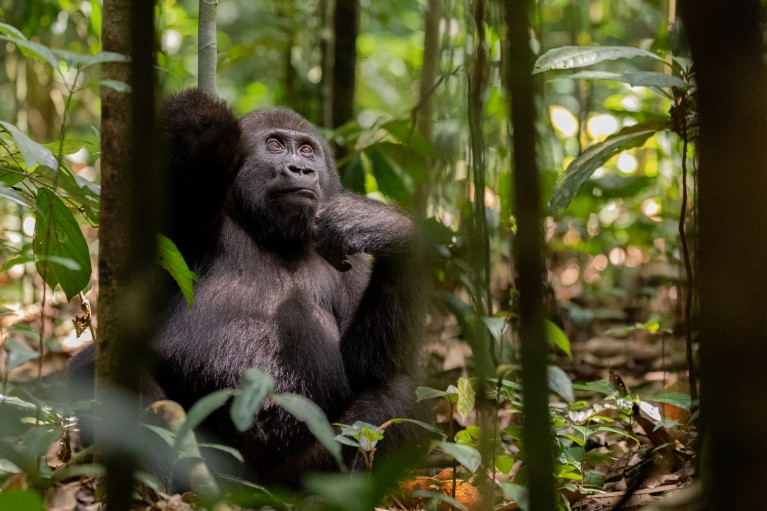
Female Western Lowland Gorilla - stock photo, A lone female Western Lowland Gorilla (Gorilla gorilla gorilla) of the Mata Group sits in the Rainforest of the Central African Republic.Credit: Robert Muckley/ Moment/ Getty Images
A third of Africa's remaining great ape population is at risk from the impacts of mining for minerals including lithium, cobalt, manganese, and copper, a study has found.
In work published in Science Advances1, a team from Australia, Germany, Kenya, Uganda, Cote d'Ivoire, UK, Sierra Leone and the United States, found that 180,000 apes are under threat, particularly in West Africa, where around 80% live within 50 km buffers of mines.
Jessica Junker, a research scientist from Re:wild and colleagues, correlated great ape species population data with critical mineral mines across 17 African countries and showed that high-density great ape habitats significantly overlap with mining locations.
Genevieve Campbell, senior associate at Re:wild and head of the International Union for Conservation of Nature-IUCN’s Primate Specialist Group ARRC Task Force told Nature Africa “the list of impacts on apes is quite long, but generally indirect impacts are quite important as they can extend outside of a mining permit."
The construction of roads and rail lines for the transportation of minerals to airports has also led to collisions of vehicles with apes. The risk to apes of disease such as dengue fever, malaria, and yellow fever, due to increased contact with people could also be elevated.
With less than 5% of the world’s mining activities taking place in Africa, a continent with 30% of the world’s mineral resources, the team projects a surge of mining activities in the near future to fulfill the rush for critical minerals needed for manufacturing clean energy technologies.
Mining areas in countries with relatively large and less fragmented ape populations, such as the Cameroon, Republic of Congo, Equatorial Guinea, Gabon and Guinea had lower ape densities than non-mining areas. The researchers found that in Burundi and Côte d’Ivoire, apes are in abundance in protected areas where industrial mining is prohibited, whereas in the Republic of Congo that has a dense and widely distributed ape population, mining areas consistently had lower ape densities than non-mining areas.
Junker told Nature Africa that although the risks posed to great apes by various threats are generally well recognized, the specific impacts of mining on apes and their habitats remain less explored.
